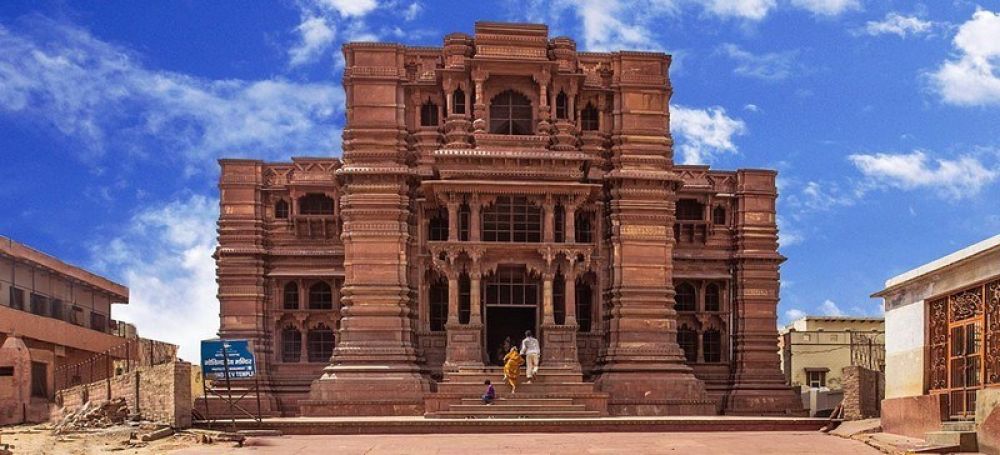

The city of Mathura, nestled in Uttar Pradesh, India, is renowned as the birthplace of Lord Krishna and has been a pivotal locus for Hindu pilgrimage for centuries. Among its plethora of sacred sites, the Govind Deo Temple stands out as a historic and spiritual landmark. This venerable temple is not just central to the religious fabric of the region, but it also plays a significant role in the tourism history of Mathura.
The Govind Deo Temple was constructed in the year 1590 by General Raja Man Singh of Amber, a devotee of Lord Krishna and a confidant of the Mughal Emperor Akbar. The temple's architecture is a splendid example of medieval northern Indian temple architecture mixed with Mughal influences, exemplifying a period when cultural and religious syncretism flourished under Akbar's policy of Sulh-e-kul (universal peace).
Originally, the temple was a majestic seven-story structure made.of red sandstone, noted for its intricate carvings and Hindu motifs which attract visitors and devotees alike. Although the temple was desecrated by Mughal emperor Aurangzeb in the 17th century and reduced to three stories, it remains an architectural wonder and an enduring symbol of the city’s resilience and religious devotion.
Through the centuries, the Govind Deo Temple has welcomed countless pilgrims and has been integral to the hindu pilgrimage circuit of Vraja. It’s also part of the Braj Chaurasi Kos Yatra, an important religious journey that covers 84 Kos (approximately 252km) around the Braj region. The temple celebrates festivals like Janmashtami (Lord Krishna’s birth), Holi, and Govardhan Puja, which attract thousands of tourists every year.
In recent years, tourism in Mathura, and at Govind Deo Temple in particular, has been influenced by developments such as the Heritage City Development and Augmentation Yojana (HRIDAY) that aims to preserve and revitalize the cultural heritage of the city. Upgraded facilities, improved access, and a focus on sustainable tourism have made visiting the temple easier and more enjoyable for tourists from all over the world.
Furthermore, there’s been a growing trend of combining spirituality with leisure travel, leading to a rise in ‘religious tourism’ or ‘pilgrimage tourism’. This encompasses not only attending religious ceremonies but also enjoying the local culture, cuisine, and the arts. Festivals and cultural programs around the temple offer a deeper immersion into the local traditions of Mathura.
The Govind Deo Temple tourism, although robust, faces challenges in terms of preservation and environmental impact. Efforts are ongoing to ensure that the temple’s architecture and the surrounding area are conserved for future generations while facilitating a quality experience for tourists. The potential of digital tourism, including virtual tours and online darshans, is also being explored to cater to those unable to visit in person.
Understanding its past and looking towards the future, the Govind Deo Temple remains a mesmerizing blend of history, culture, and spirituality that continues to draw visitors seeking both divine blessings and a touch of India’s rich heritage.